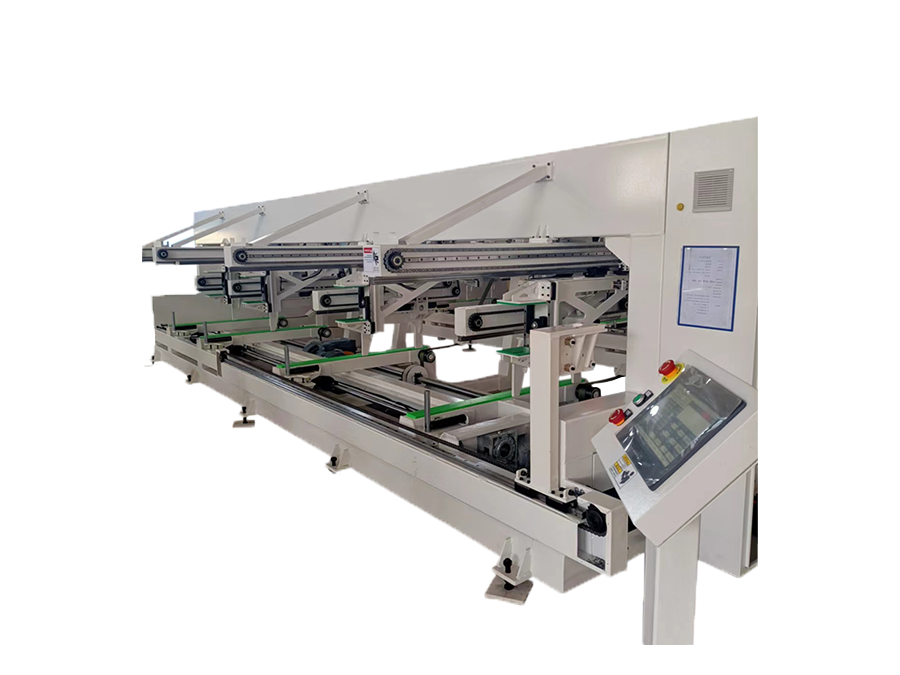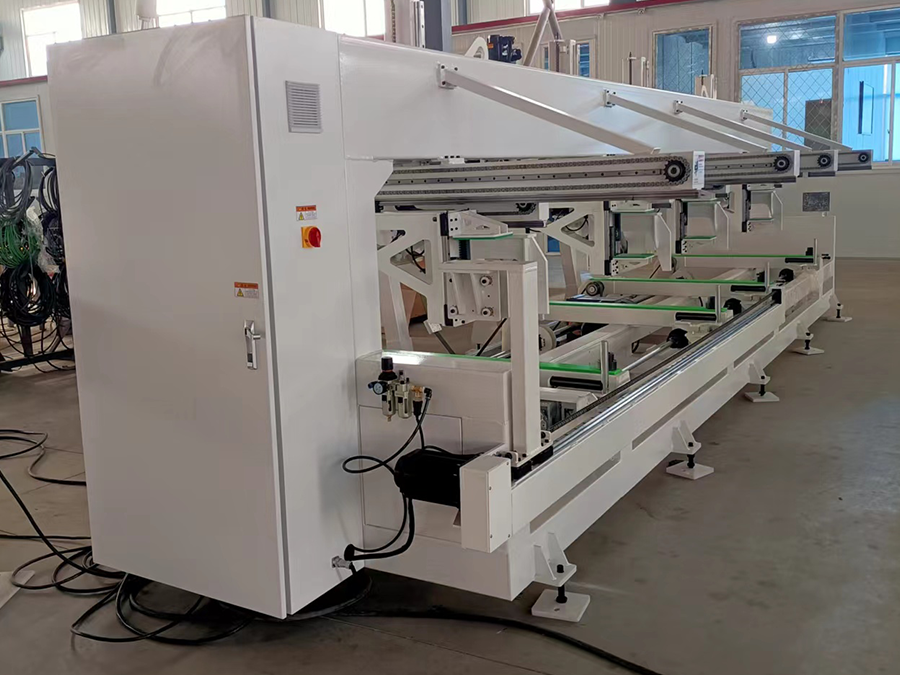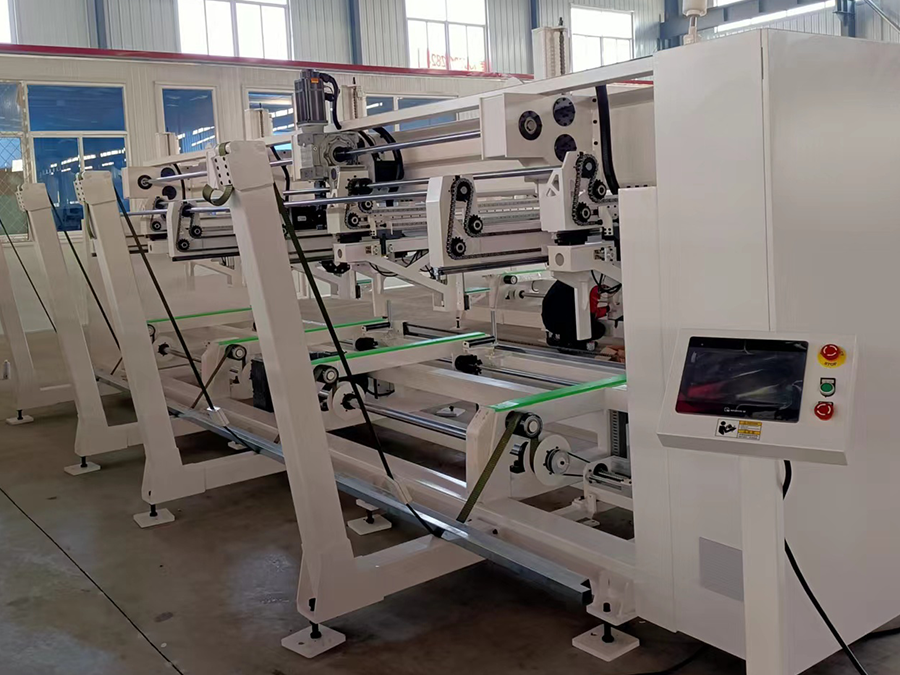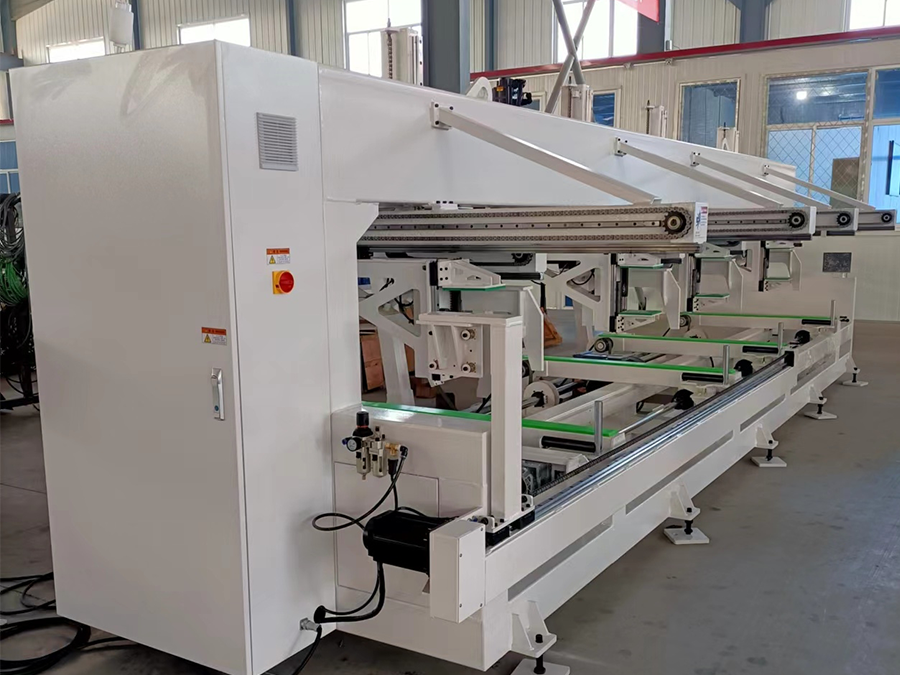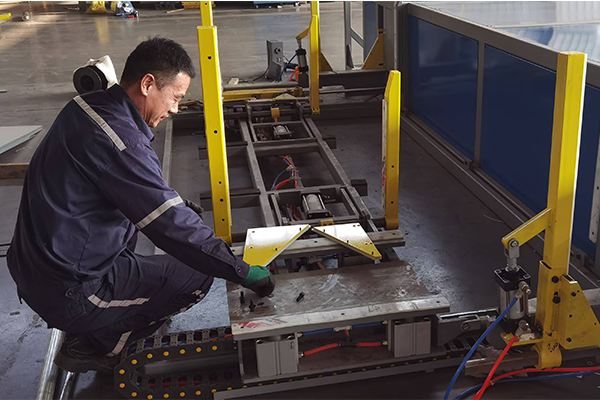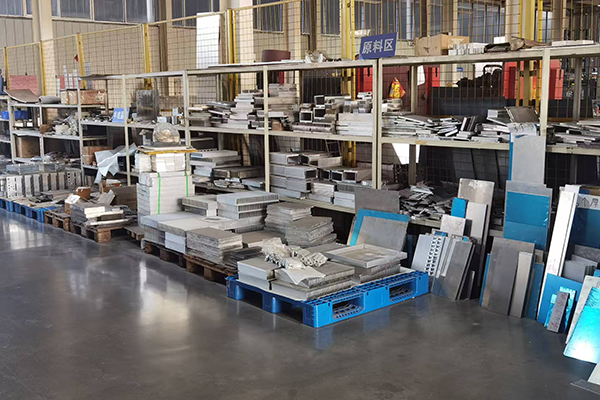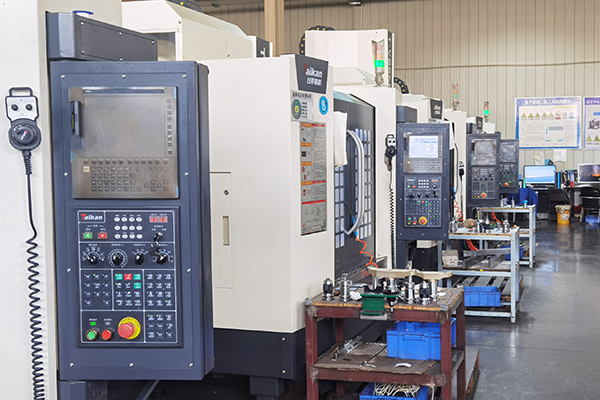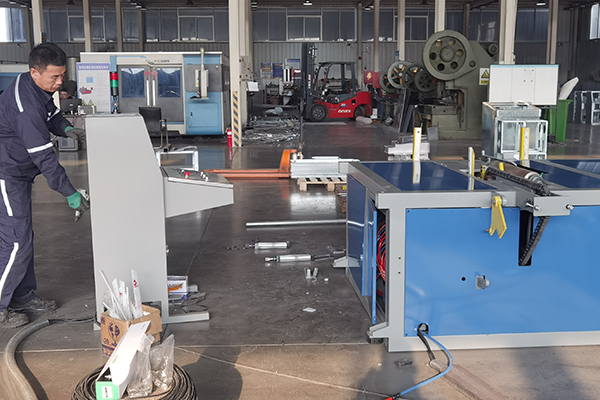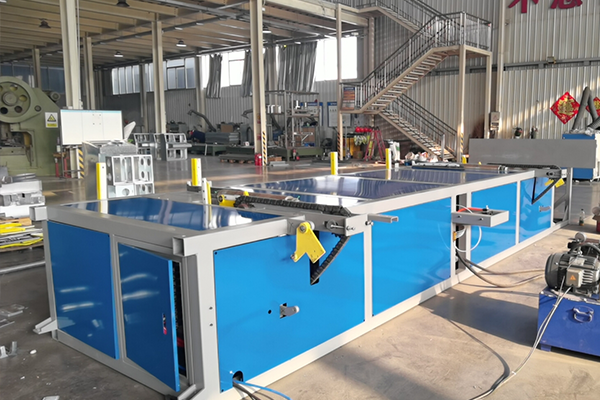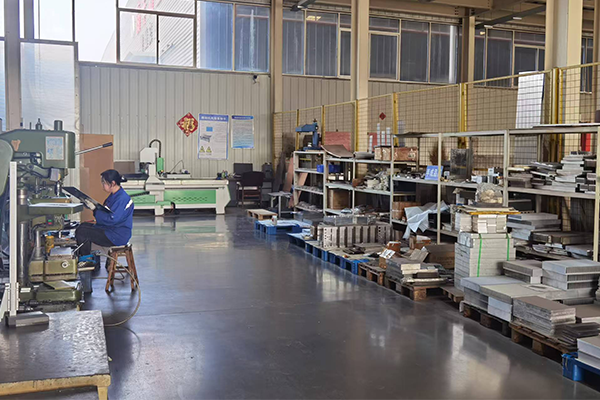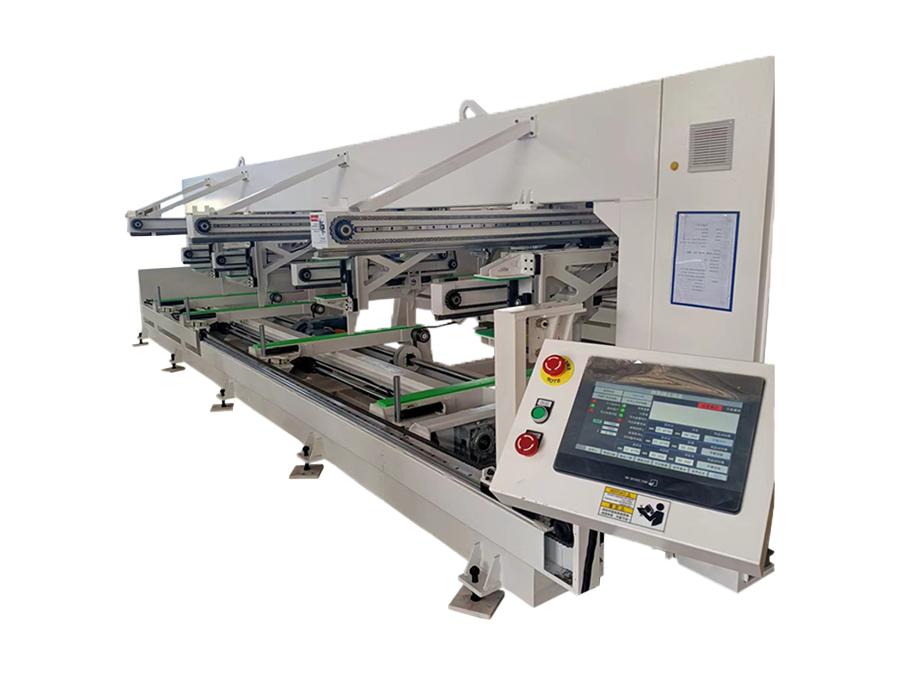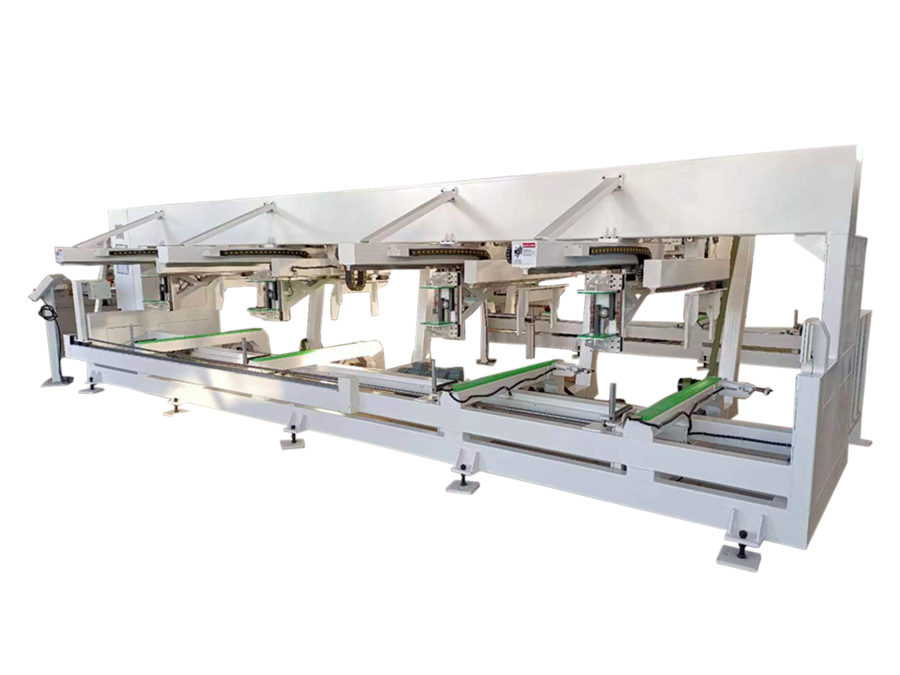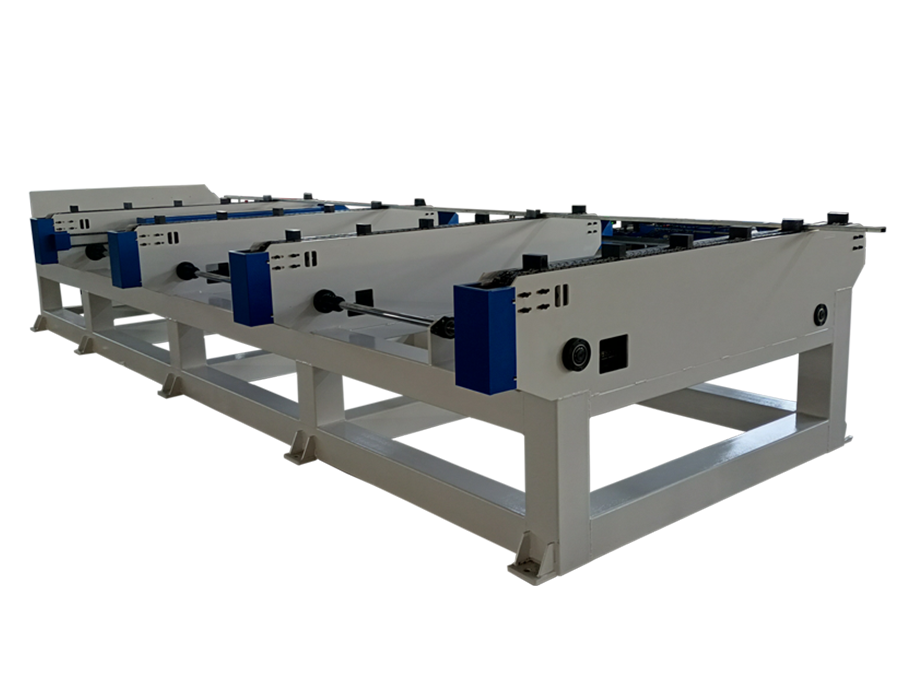Online
Product Inquiry
All Product Categories
6020GT pipe cutting and loading machine
1. Pipe conveying device: responsible for conveying pipes from the storage area to the working area of the pipe cutting machine. This can be achieved through conveyor belts, rollers, chain conveyors, etc. 2. Positioning and clamping mechanism: After the pipe arrives at the working area, it needs to be accurately positioned and clamped to ensure the accuracy and stability of the cutting. This is usually achieved through drive mechanisms such as cylinders and servo motors. 3. Sensors and control systems: Sensors are used to detect information such as the position and size of the pipe and feed this information back to the control system. The control system controls the execution of the entire feeding process according to the preset program and the information fed back by the sensor.
6020GT pipe cutting and loading machine
1. Pipe conveying device: responsible for conveying pipes from the storage area to the working area of the pipe cutting machine. This can be achieved through conveyor belts, rollers, chain conveyors, etc. 2. Positioning and clamping mechanism: After the pipe arrives at the working area, it needs to be accurately positioned and clamped to ensure the accuracy and stability of the cutting. This is usually achieved through drive mechanisms such as cylinders and servo motors. 3. Sensors and control systems: Sensors are used to detect information such as the position and size of the pipe and feed this information back to the control system. The control system controls the execution of the entire feeding process according to the preset program and the information fed back by the sensor.
Parameters
| Device Name | 6020GT pipe cutting and loading machine |
| Pipe length | 6 meters |
| Pipe size | ≤200mm square tube |
| Control method | PLC Control |
| Single weight |
≤150kg |
| power |
15kw |
| Cutting material | Metal |
| Scope of application | Tube cutting machine loading |
| Customization | Customizable |
Principle
The automatic feeding system for pipe cutting usually includes the following main parts:
1. Pipe conveying device: responsible for conveying pipes from the storage area to the working area of the pipe cutting machine. This can be achieved through conveyor belts, rollers, chain conveyors, etc.
2. Positioning and clamping mechanism: After the pipe arrives at the working area, it needs to be accurately positioned and clamped to ensure the accuracy and stability of the cutting. This is usually achieved through drive mechanisms such as cylinders and servo motors.
3. Sensors and control systems: Sensors are used to detect information such as the position and size of the pipe and feed this information back to the control system. The control system controls the execution of the entire feeding process according to the preset program and the information fed back by the sensor.
Advantages
Advantages
1. Improve production efficiency: The automatic feeding system can greatly shorten the feeding time of pipes, thereby improving the production efficiency of the entire production line.
2. Ensure cutting accuracy: Through precise positioning and clamping mechanisms, the stability of pipes during cutting can be ensured, thereby improving cutting accuracy.
3. Reduce labor intensity: The automatic feeding system can replace manual labor to complete heavy feeding work and reduce the labor intensity of workers.
4. Strong adaptability: The automatic feeding system usually has a variety of specifications and models, which can adapt to pipes of different sizes, materials and shapes.
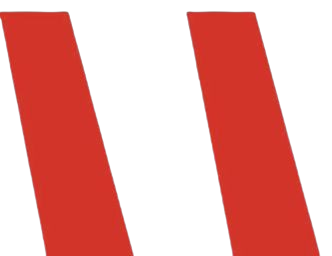
After-Sales Service

After-Sales Service Commitment
01
01
After-Sales Service Commitment
We cover repair costs within the warranty for quality issues and provide 24/7 customer support. We respond within 4 hours to resolve problems quickly.

Installation and Debugging
02
02
Installation and Debugging
Our technical team will install and debug the equipment on-site, ensuring proper setup and smooth operation.

Operational Training
03
03
Operational Training
We provide operator training to ensure correct use, reducing faults. We also train on maintenance and minor repairs to extend equipment life.

Technical Support and Consultation
04
04
Technical Support and Consultation
Clients can reach technical support anytime via phone, email, or online. For complex issues, we offer remote assistance or send technicians on-site if needed.

Maintenance and Care
05
05
Maintenance and Care
We provide regular maintenance to ensure efficient operation and prevent faults. In case of failure, we offer emergency repair services to minimize downtime.

Follow-Up and Feedback
06
06
Follow-Up and Feedback
We regularly follow up with clients to gather feedback and resolve issues, using it to improve our products and services.

Processing Center

Production Process


Requirements Analysis and Solution Design

Raw Material Procurement and Inspection

Production Preparation

Cutting and Processing

Bending and Forming

Welding and Assembly

Surface Treatment and Coating

Assembly and Debugging

Quality Inspection and Testing


Contact Us
You can contact us through the following four methods. We will reply to your inquiry within 2-8 hours after receiving it!
Call Us
Send Email
Leave a Message
Add WeChat or WhatsApp




